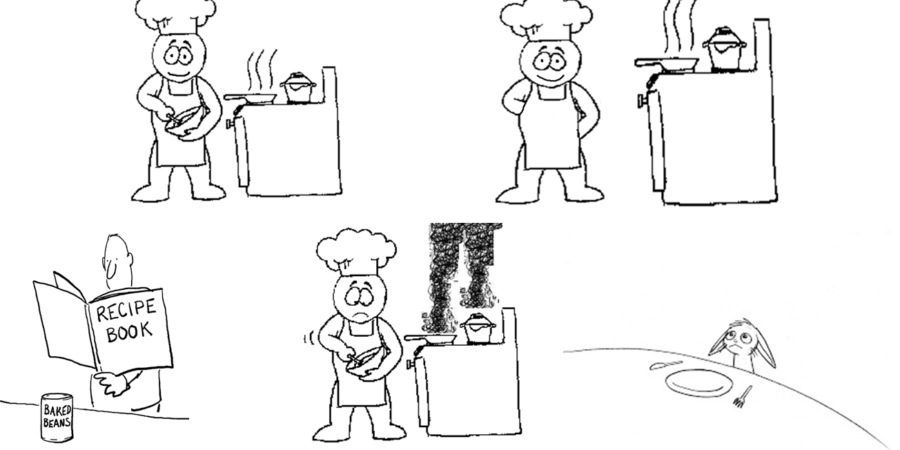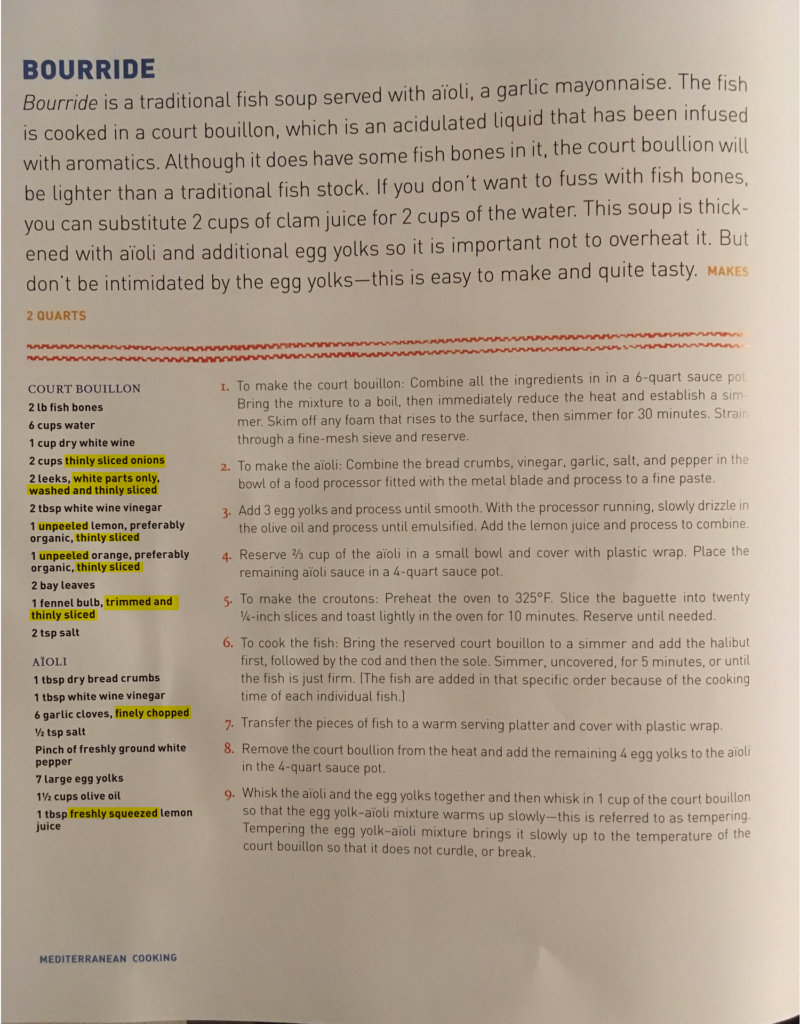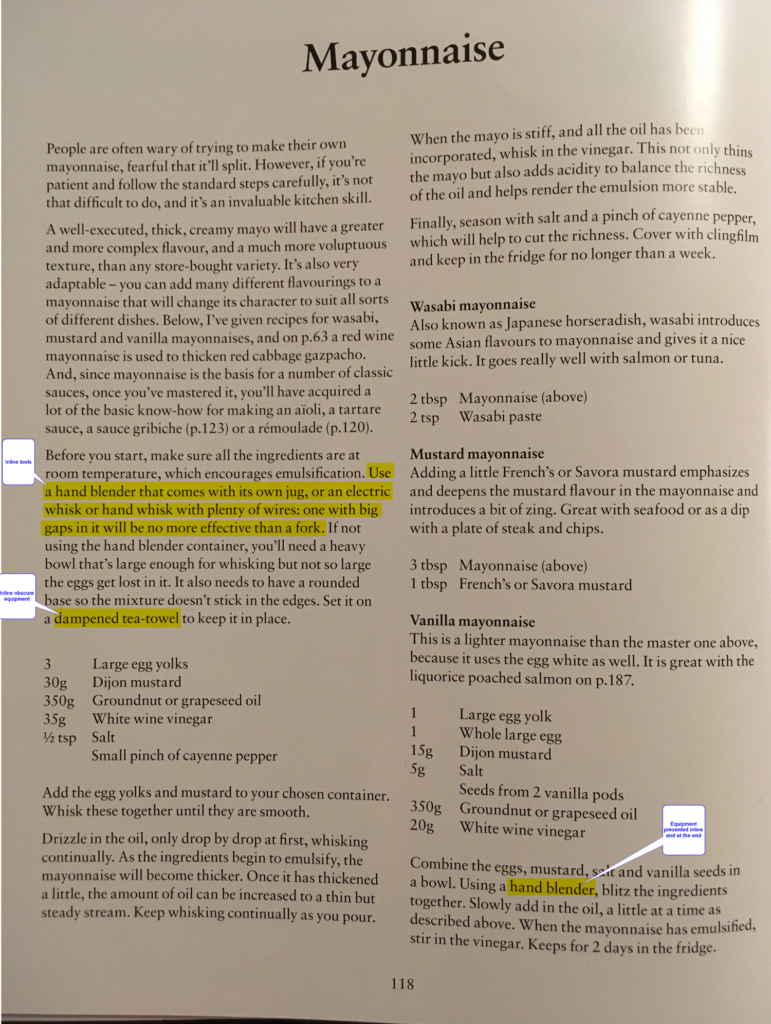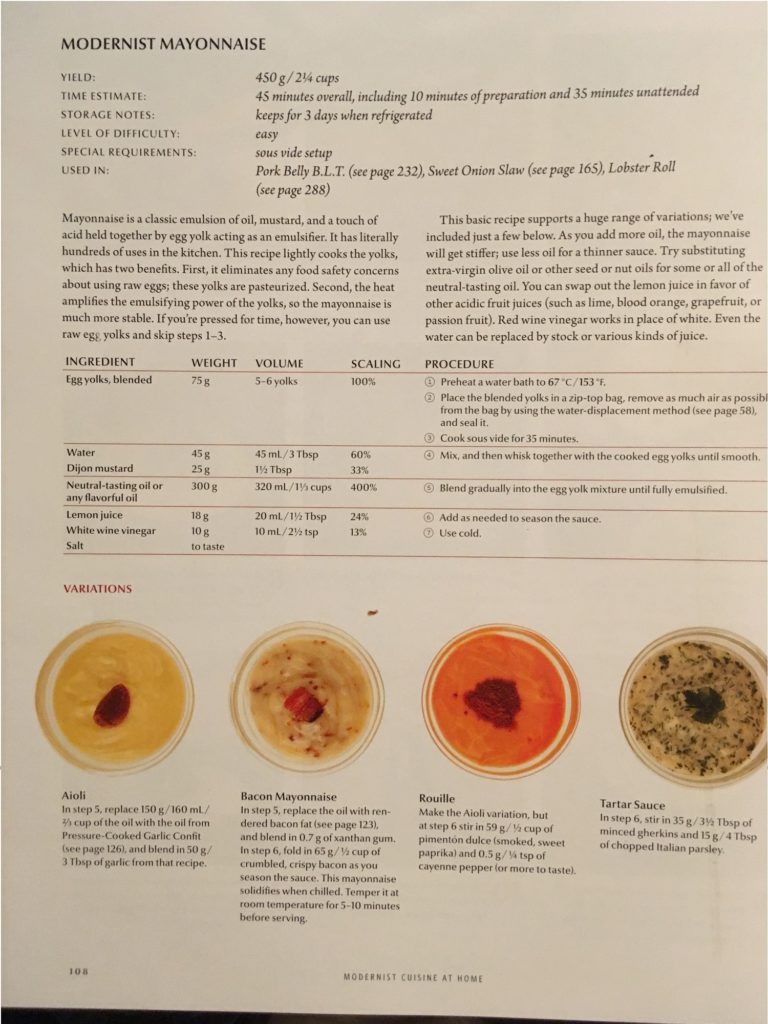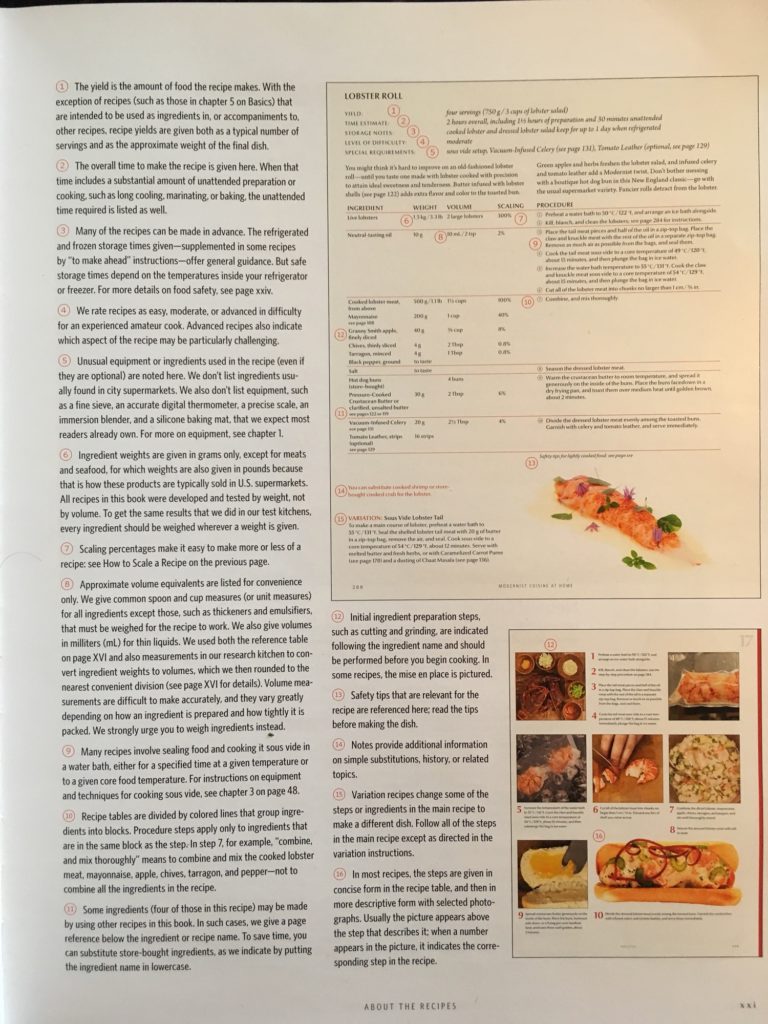It’s so odd how basic most recipes are. I’m not talking about the quality of the food but how hard they are to follow for home cooks.
How Most Recipes Look
Most recipes show ingredients in a haphazard list and list essential tools in the middle of a paragraph. When this happens you absolutely have to read the recipe multiple times so you aren’t surprised by a curve ball like needing a dampened tea towel or a special preparation like blanched lettuce.
To cookbook authors, recipe design may seem like a superfluous afterthought but, for the home cook trying something new, informative layouts are the difference between a stunning souffle and a giant ball of goop.
At their most basic, recipes contain a list of ingredients like 2 cloves garlic, 1 red onion, and a sequence of numbered steps. Only midway through, while the garlic is sauteing, do you find out you need to finely slice that red onion. As you rush to slice the onion, your garlic burns like what happened to the poor cook at the top. While this certainly is a recipe, it could be shown much better.
Here, take a look at a standard recipe from The Food Lab.
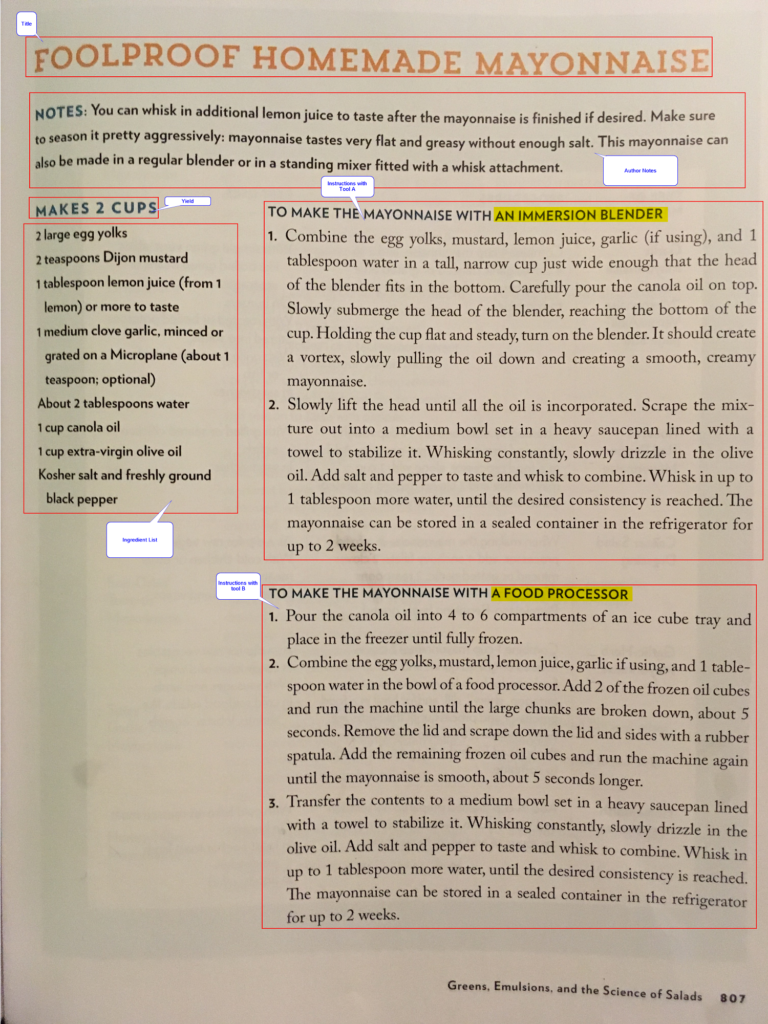 There’s an ingredient list, some notes from the author, and instructions. But I’m here to help you notice a few more nuances.
There’s an ingredient list, some notes from the author, and instructions. But I’m here to help you notice a few more nuances.
Good authors provide the preparation instruction in the ingredient list. That’s so you can prepare everything before you touch the stove. For example, look at this picture of a recipe from Mediterranean Cooking.
Rather than fret about your garlic not being finely chopped, yes this can make a difference, especially with an emulsion like aioli, you can prepare all your ingredients ahead of time like the pro’s on cooking shows. When you’re ready for garlic, just take the garlic and dump it in. I like to put prepped ingredients in small prep bowls so my cutting board stays open.
Improvements to help the home cook
That recipe from Mediterranean Cooking also shows a new concept compared to The Food Lab example, organizing ingredients by their final product, Court Bouillon and Aioli. In step 1, the recipe reads “Combine all the ingredients in a 6-quart sauce pot…”. This is so much simpler than just listing all the ingredients and then having to use a big comma list to combine them all. Still, the recipe could be better.
Lots of recipes, and this one, have steps that require a full read and reread. Look at step 9 more closely.
If you start whisking too soon, you’ll end up without 1 cup of court bouillon ready. Again little problem. No big deal. You get the 1 cup and pour it in.
Shit, you didn’t realize you have to whisk it in slowly so the mixture doesn’t curdle. Now the aioli is ruined and you don’t have the right amount of court bouillon leftover. If the author just wrote “then slowly whisk in” the recipe could be saved and people wouldn’t be intimidated by cooking.
See this stuff is important.
Another big issue is presenting key things in the middle of a paragraph. Look at this example from Heston Blumenthal at Home
It’s not exactly fun to be halfway through a recipe before you need an electric whisker with plenty of wires. Authors should call these things out first so readers don’t have to read the whole recipe before realizing they can’t make it. And also, “Keeps for 2 days in the fridge”. That’s awful quick so you better have a use for that mayo fast. Hopefully you were able to plan ahead and can figure out the yield!
So What is Good Recipe Design?
Good recipe design should require minimal re-reads and present information in a linear fashion i.e. “slowly mix” instead of “mix so that the mixture warms slowly”. My favorite example of good recipe design in cookbooks comes from Modernist Cuisine at Home . On page 21 of the preface they go over their design for recipes, calling out minor details like always including preparation notes with the recipe. Let’s take a look at one of their recipes for mayonnaise.
They utilize a grid layout with common rows like yield, time estimate, storage notes, and special equipment — they also list common equipment they assume you have in the introduction with purchase considerations.
Rather than separate the ingredients from the instructions they place them together grouped step by step. At first this may feel weird, but after you try it you’ll hate recipes that don’t. See their full methodology for their recipes below
Final Thoughts on Recipe Design
Next time you write or read a recipe, I urge you to think about it the same way Modernist Cuisine at Home does. Their grid layout is far easier to follow for a home cook. The only caveat I’ve experienced is that the layout makes the experience of following recipes feel more formulaic than artistic — which may not be a bad thing for modernist chefs. This leads me to a summary of what good recipe’s must have.
Good Recipe Must Haves
- Ingredient preparation listed with the ingredients
- Strive to present the information in a linear way
- Special equipment displayed prominently
- Storage notes and yield should be listed, preferably at the top
I think measuring ingredients with a scale and laying out the steps with the instructions like Modernist Cuisine is the best way to write a recipe but it’s debatable. To learn more about the cookbooks in this article I’ve prepared a few recommendations below.
Cookbook Recommendations
I’m working on a few cookbook reviews and will have more on that later. For now, if there is one cookbook you absolutely must have, it’s The Food Lab by Kenji Lopez. Unlike other cookbooks, he has an equipment list with the best bang for your buck items and top of the line recommendations. Kenji goes into extreme detail testing things like how much water and salt you use for pasta, whether freezing potatoes for french fries and double frying is worth it, and ways to utilize those extra ingredients you have. He has never let me down and I’ve read his book cover to cover.
The one chef you want in your corner is Kenji Lopez. Modernist Cuisine at Home is a great book too, and truly looks impressive on a coffee table, but it’s only worth it if you have an extra $100 to spend. At $20-30 dollars and over 800 pages, The Food Lab is by far the best cookbook I’ve ever owned.
- Buy The Food Lab here
- Buy Modernist Cuisine at Home
- Ever got annoyed using your knife or hand to transfer ingredients from the cutting board to the pan? Get a bench scraper, the one piece of equipment you never knew you needed but will change your life — thanks Kenji Lopez!.
What’s your take?
[democracy id=”1″]
